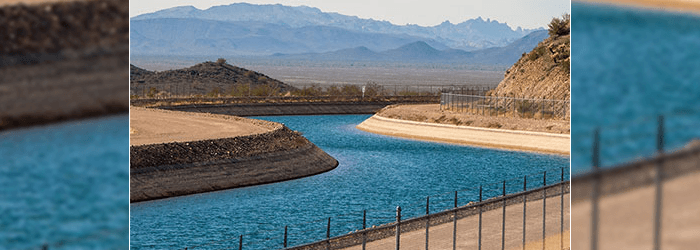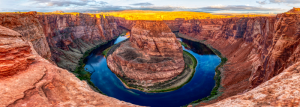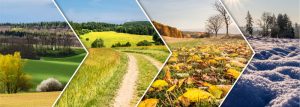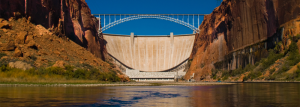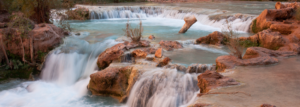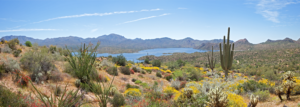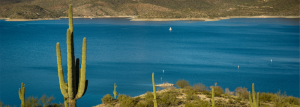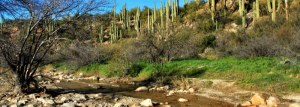As you know, water is a precious commodity in a desert environment. The Central Arizona Project (CAP) focuses on delivering Colorado River water to Maricopa, Pinal, and Pima counties. CAP works with the Arizona Department of Water Resources (ADWR) to ensure our state’s water supply is protected and managed correctly. The Bureau of Reclamation, a federal department under the Department of the Interior, manages the Colorado River System. The states that share the Colorado River supply are divided into the Upper Colorado River Basin and the Lower Colorado River Basin. The Lower basin area includes Arizona, California, Nevada, and New Mexico.
The Colorado River
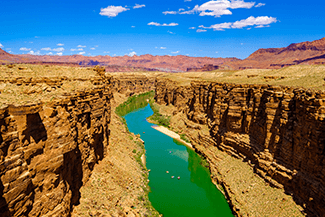
All of us have heard about the stress put on the Colorado River over the last several years. Meteorologists say the drought has been going on for over 23 years. This drought puts Arizona in an unprecedented situation, putting a kink in the potential water availability for member states. The drought has resulted in record-low water levels in the Basin’s two major reservoirs; Lake Powell, serving the Upper Basin, and Lake Mead, serving the Lower Basin.
Negotiations regarding how to handle dwindling Colorado River Supplies have been ongoing for several years, and as you might imagine, they have been challenging. Will Rogers said it best, “Out here in the west, liquor is for drinkin’, water is for fightin’. ”
The subjects of conservation and reduced allocations are explored best through these CAP website links.
If you like to explore charts and tables, here is a helpful link to the Colorado River Conditions Dashboard:
The links help explain what is going on to benefit those of us who are users of CAP water. You likely use some of this water if you live in a Colorado River community like Bullhead City, Lake Havasu, or Yuma or if you use water provided by CAP in Maricopa, Pima, or Pinal County. Whether you irrigate farmland, turn on a faucet at home, or use the water in your industrial business, it matters to you.
Where We Are Today
We have been hearing good news regarding this winter’s snowpack and wonder how this will affect us.
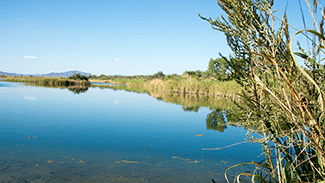
The Colorado River basin begins, of all places, in Colorado. A good portion of the Rocky Mountains in this area forms the beginning of a watershed that collects rainfall and snowfall and delivers that ‘runoff’ to the lowest part of land coursing through the Basin. That is the Colorado River.
Over the past 23 years, this Basin has suffered through a significant drought. One of the effects this lack of moisture has had is that a good snowpack has not necessarily resulted in a good runoff. A process called ‘Aridification’ causes a change in the climate of an affected area. The lower amounts of rain and snowpack alter the amount of runoff and, therefore, the water in our reservoirs.
Drought, coupled with a warming atmosphere, makes the atmosphere ‘thirstier’ than usual. CAP research shows these conditions have created a ‘perfect storm.’ Increased evaporation combined with lower rainfall amounts over a long period has resulted in the current low water levels of our state’s two largest reservoirs, Lake Powell and Lake Mead.
This year, the runoff in the Colorado River looks very promising, based on the ‘magical snowpack’ year we have had. However, the River Basin partners still need to address the short-term and longer-term ramifications of water usage and storage. CAP has plans and processes underway.
The Secretary of Interior has a short-term strategy that was developed as a consensus proposal by the Lower Basin water users. Consisting of the states of Arizona, California, and Nevada, it has been accepted as a step forward in resolving usage and distribution issues among the Basin’s users.
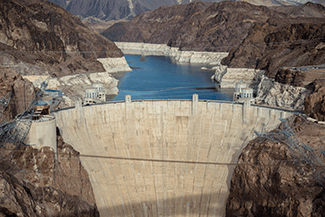
In general, the short-term strategy is to conserve historical volumes of water in Lake Mead by storing three million gallons of water over the next few years. The goal is to store half this amount by the end of 2024. You can find a river update here:
This short-term consensus takes into consideration all the users and the groups they represent to develop the necessary longer-term strategies. The new guidelines form a new operating system for the future. These operating systems need to be completed by the end of 2026.
Then they will be submitted to the Secretary of the Interior for approval. The short-term solution gives us the time necessary to focus efforts and resources on developing these guidelines.
Creating a sustainable system within which resources are carefully managed is vital. Synthesizing the needs of various groups that represent millions of users is a challenging task.
Conserving water is an effort that belongs to every Arizona resident. Every Arizona resident can find ways to cut their water consumption by at least 10%. Paying attention to our water consumption gives us all an opportunity to be part of the solution. We thank the Central Arizona Project for its role in this crucial project affecting all Arizonans.
Additional Resources
- Central Arizona Project Canal: Arizona’s Source For 35% Of Its Water Resources
- Rosie’s Water Resource Guide
- #HomeownerWaterConservation | Tips For Homeowners
YouTube | Rosie on the House CAP Helicopter Tour
###
CONTENT PARTNER: Central Arizona Project (CAP)
Central Arizona Project (CAP) delivers water to nearly 6 million people, more than 80% of the state’s population, in Maricopa, Pinal and Pima counties. CAP carries water from Lake Havasu near Parker to the southern boundary of the San Xavier Indian Reservation southwest of Tucson. It is a 336-mile long system of aqueducts, tunnels, pumping plants and pipelines.
delivers water to nearly 6 million people, more than 80% of the state’s population, in Maricopa, Pinal and Pima counties. CAP carries water from Lake Havasu near Parker to the southern boundary of the San Xavier Indian Reservation southwest of Tucson. It is a 336-mile long system of aqueducts, tunnels, pumping plants and pipelines.
PODCAST
Central Arizona Project’s Vineetha Kartha & Nolie Templeton discuss the current Tier 2 Water Shortage at Lake Powell and Lake Mead. We also cover managing reduced water allocations for Arizona. Even with the recent help from a ‘magical snowpack/melt’, the long term drought and low capacity lake levels continue. However, it’s not all bad news as you’ll hear from Vineetha and Nolie!
Podcast Archive With Expanded Content and Resources
PHOTO CREDIT
- Central Arizona Project (CAP)
- Shutterstock

